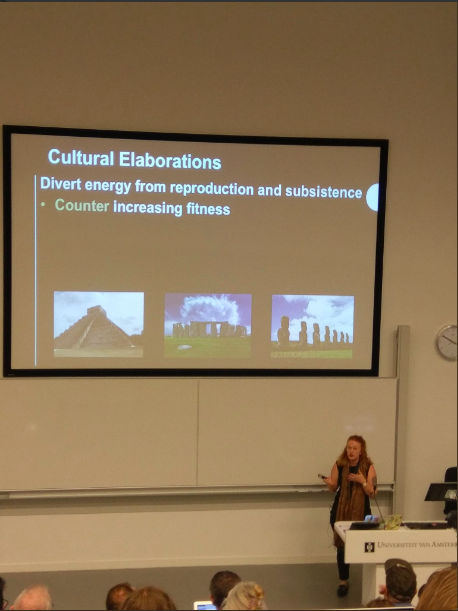Pueblo Bonito at Chaco Canyon, New Mexico, USA (2019)
Excavations at Hopoate site, Kingdom of Tonga (2014)
Human Behaviour and Evolution Society Conference, Amsterdam, Netherlands (2018)
At the Kelvingrove Art Gallery and Museum, Glasgow.
Hi!
My name is Brea McCauley and I am an Archaeology Doctoral student at Simon Fraser University.
I received a BA (Hons) in Archaeology and certificates in Cultural Resource Management and Liberal Arts from Simon Fraser University (SFU). I then went on to receive my MA in Archaeology also at SFU. I am still at SFU where I’m pursuing my PhD in Archaeology under Dr. Mark Collard.
While completing my degrees, I am also a member of the Crawford Lab of Evolutionary Studies Research Group and the Human Evolutionary Studies Program group. Further, I worked for 5 years as a laboratory assistant for the South Pacific Archaeology Lab run by Dr. David Burley.
I am fascinated by human cross-cultural variability. As human beings, we all have these basic problems that we share. However, the ways in which we deal with them are extremely variable. We’re absolutely ingenious creatures that are immensely creative in our problem solving skills.
Within the framework of cross-cultural variability, for the past few years I have been investigating the variability in different types of Permanent Body Modification (PBM) practices.
For my Masters I conducted two studies concerning finger amputation practices. The first looked at Upper Palaeolithic incomplete hand images. I identified over 120 societies in the ethnographic record who engaged in different types of finger amputation practices and compared the patterns in these practices to the patterns in the incomplete hand images. The second study investigated what are called “finger bowls” among the Ancient Maya. These are caches of human finger bones placed in bowls. I conducted a review of the practice to understand the patterns and scope of this phenomenon.
For my PhD I am expanding beyond just finger amputation to encompass more types of PBM practices. My dissertation centres around two points. First, to describe the global variability in these practices, and second, to determine why individuals engage in these practices.
In addition to my thesis projects, I have worked on other projects as well. With co-authors, I created a database of fire-use among historic hunting and foraging societies to be used as an analytical tool to interpret archaeological fire remains. Further, I worked on a team who tested a hypothesis about the functions of cultural elaborations (e.g., monuments) using an Agent-Based Model.
Currently, I am working on several new projects. The first is investigating the global variability in mortuary practices. Second, along with Mark Collard, I am writing a chapter on the cross-cultural phenomenon of finger amputation for the upcoming Oxford Handbook on the Archaeology and Anthropology of Body Modification.
Further, while my current research may not contain fieldwork, I am committed to participating in active excavations. Past field work projects include surveying at the Sigatoka Sand Dunes in Fiji, and excavations at the Hopoate site in the Kingdom of Tonga, La Ferrassie Neanderthal site in France, and Langmadhalde rock shelter site in Germany.



